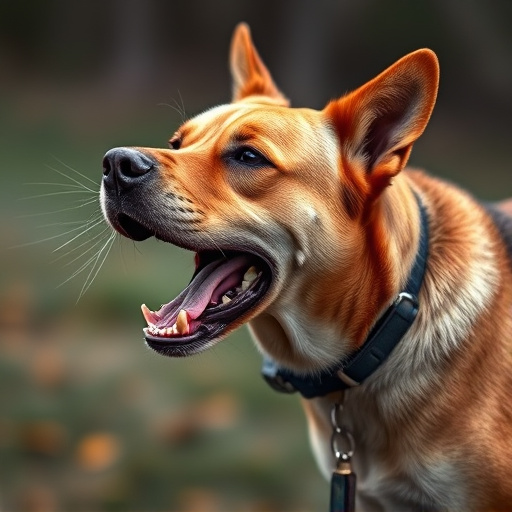Dog aggression, driven by various factors, can be prevented using canine repellents with safety features like pepper spray. This non-lethal method utilizes capsaicin to temporarily disorient and irritate aggressive dogs, offering a humane alternative to force. The repellent's specialized formula and advanced safety mechanisms, including lock features, ensure minimal harm to people while protecting against dog attacks. Effective application techniques, adhering to local laws, and regular maintenance are crucial for responsible usage.
“Dog attacks can be terrifying experiences, but understanding canine aggression and implementing effective prevention strategies is key. This article explores a unique solution: dog attack prevention pepper spray, a powerful tool in your safety arsenal. We delve into the science behind dog aggression and its triggers, uncovering how pepper spray acts as a strategic deterrent.
Learn about its safety features, benefits, and application techniques to empower yourself with knowledge and enhance your protection against potential canine threats.”
- Understanding Dog Aggression and Its Triggers
- The Role of Pepper Spray in Canine Repellent Strategies
- Key Features and Benefits of Dog Attack Prevention Pepper Spray
- Application Techniques and Safety Precautions
Understanding Dog Aggression and Its Triggers
Dog aggression can stem from a variety of factors, and understanding these triggers is crucial for preventing potential attacks. Some dogs may exhibit aggression as a result of fear or anxiety, especially when they feel threatened or unsure in unfamiliar situations. This could include encounters with other animals or people, or even loud noises that startle them. Additionally, certain breed characteristics, previous traumatic experiences, or lack of socialization can contribute to aggressive behaviour.
When considering dog attack prevention methods, incorporating safety features in canine repellents is a proactive approach. These repellents often contain active ingredients like capsaicin, the same compound found in pepper spray, which can deter dogs without causing them lasting harm. Such safety features ensure that both human and animal well-being are prioritized, as they provide an effective means of preventing attacks while minimizing the risk of injury to either party.
The Role of Pepper Spray in Canine Repellent Strategies
In the realm of canine repellent strategies, pepper spray stands out as a modern and effective safety feature for dog attack prevention. Its primary role is to deter aggressive dogs by causing temporary disorientation and pain through irritation of the eyes and respiratory system. This non-lethal approach offers a crucial alternative to physical force or more harmful chemicals, making it particularly appealing in public spaces where both humans and animals coexist.
The safety features incorporated into pepper spray for dog repellent purposes are designed to ensure minimal harm to humans while maximizing its effectiveness against canines. Formulated with capsaicin, the active ingredient found in chili peppers, these sprays create a barrier that discourages dogs from approaching, allowing individuals to maintain their safety and security. Moreover, the ease of use and portability of pepper spray make it an accessible option for people facing potential dog attacks in various settings, contributing to enhanced personal protection.
Key Features and Benefits of Dog Attack Prevention Pepper Spray
Dog Attack Prevention Pepper Spray is a powerful tool designed to enhance personal safety while encountering potentially aggressive dogs. The key features and benefits of this innovative product lie in its specific formulations and application methods, ensuring both effectiveness and user-friendliness.
One of the standout safety features is its active ingredient—a specialized pepper spray formula tailored to disrupt a dog’s sense of smell and vision without causing permanent harm. This non-lethal approach allows individuals to deter and escape potential attacks while minimizing the risk of injury. Additionally, the spray’s range and ease of use are significant advantages. With a simple trigger mechanism, users can apply the repellent from a safe distance, giving them valuable time to retreat or seek help. The can design often includes safety features like lock mechanisms, ensuring accidental discharge is avoided, which is crucial for peace of mind during outdoor activities.
Application Techniques and Safety Precautions
Application Techniques and Safety Precautions
When using dog attack prevention pepper spray, understanding application techniques is key. Aim for the eyes—the spray can temporarily blind or disorient a dog, giving you valuable time to escape. Hold the canister at a safe distance, typically 2-3 feet away, and swing it in an arc towards the dog’s face. Practice this technique regularly to ensure accuracy under stress. Always remember to keep your hand protective gloves on during application for safety against accidental spray misting.
Safety precautions are paramount. Ensure you’re in compliance with local laws regarding pepper spray usage. Keep the canister out of reach of children and pets. Store it in a secure, labeled container, clearly marked as a canine repellent. Familiarize yourself with the spray’s range, wind conditions, and degradation rate to maximize effectiveness. Regularly inspect the canister for damage or leakage and replace it promptly if needed. Safety features in canine repellents, like rapid dispersion and non-residue formulas, further ensure responsible and safe usage.
In light of the above discussions, dog attack prevention pepper spray emerges as a valuable tool within canine repellent strategies. By understanding dog aggression triggers and implementing proper application techniques, this non-lethal option offers effective protection with minimal risk. The safety features incorporated in these sprays ensure responsible use, making them a practical solution for individuals seeking to deter potential attacks while promoting overall safety in encounters with aggressive dogs.
